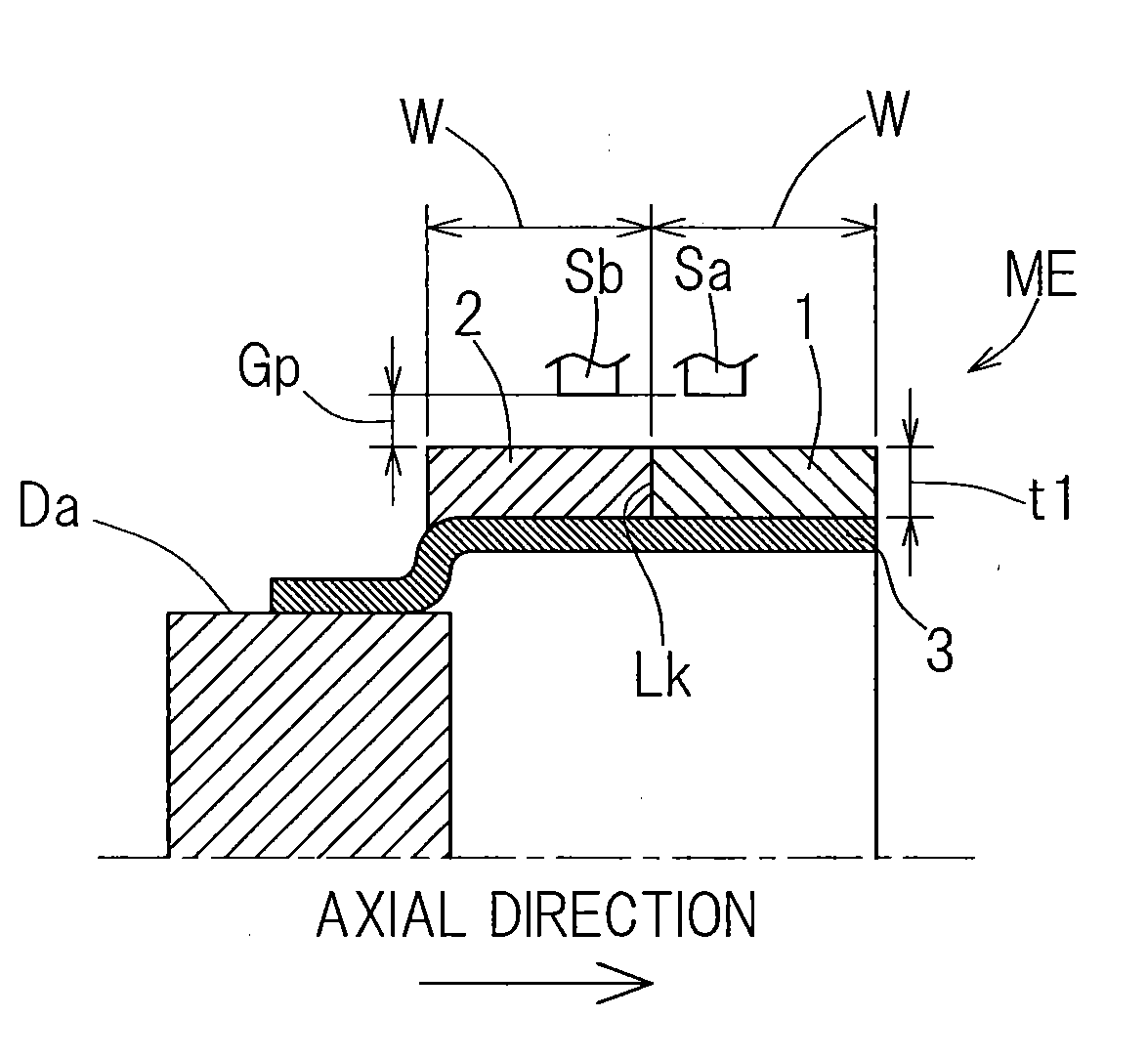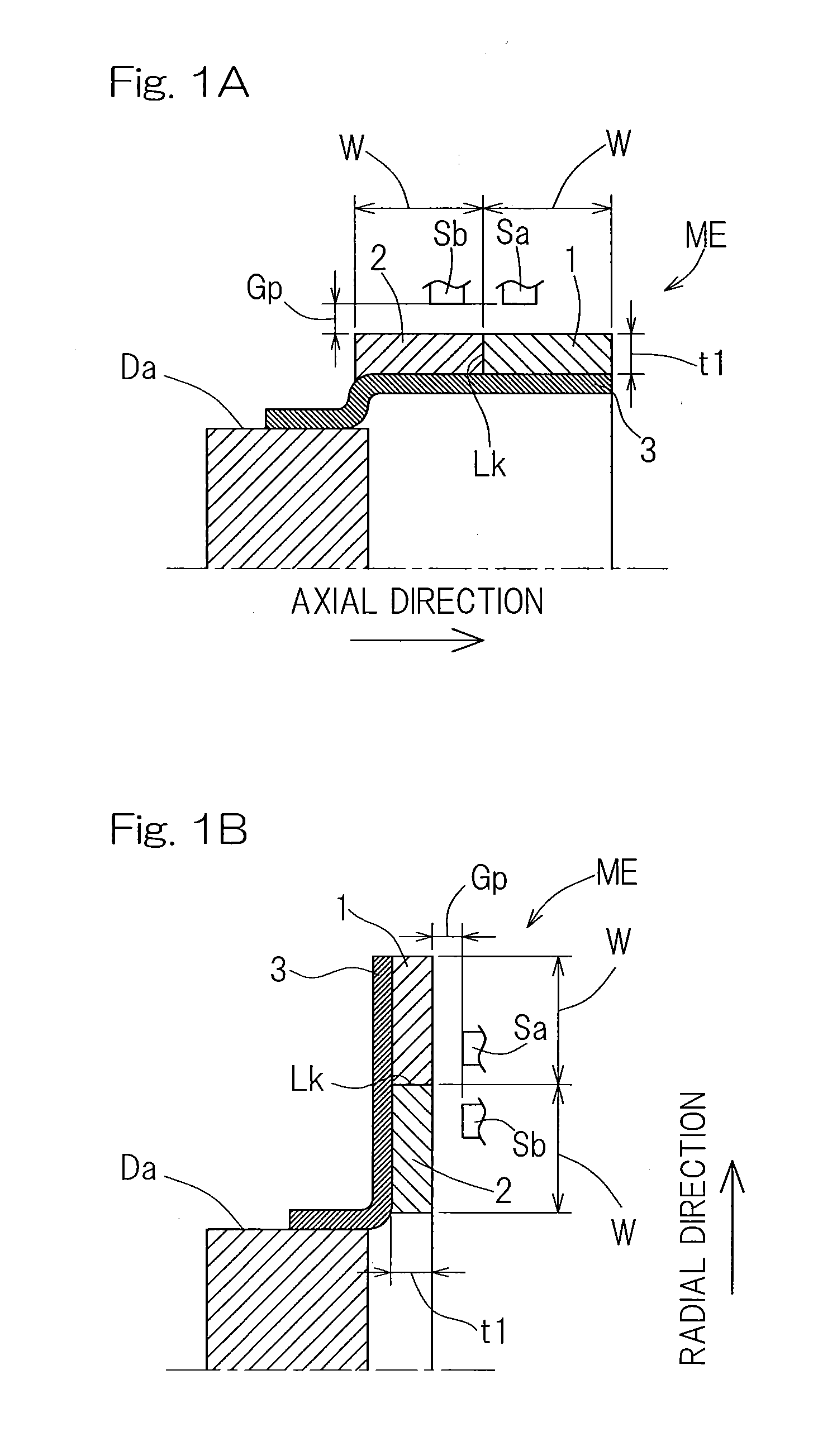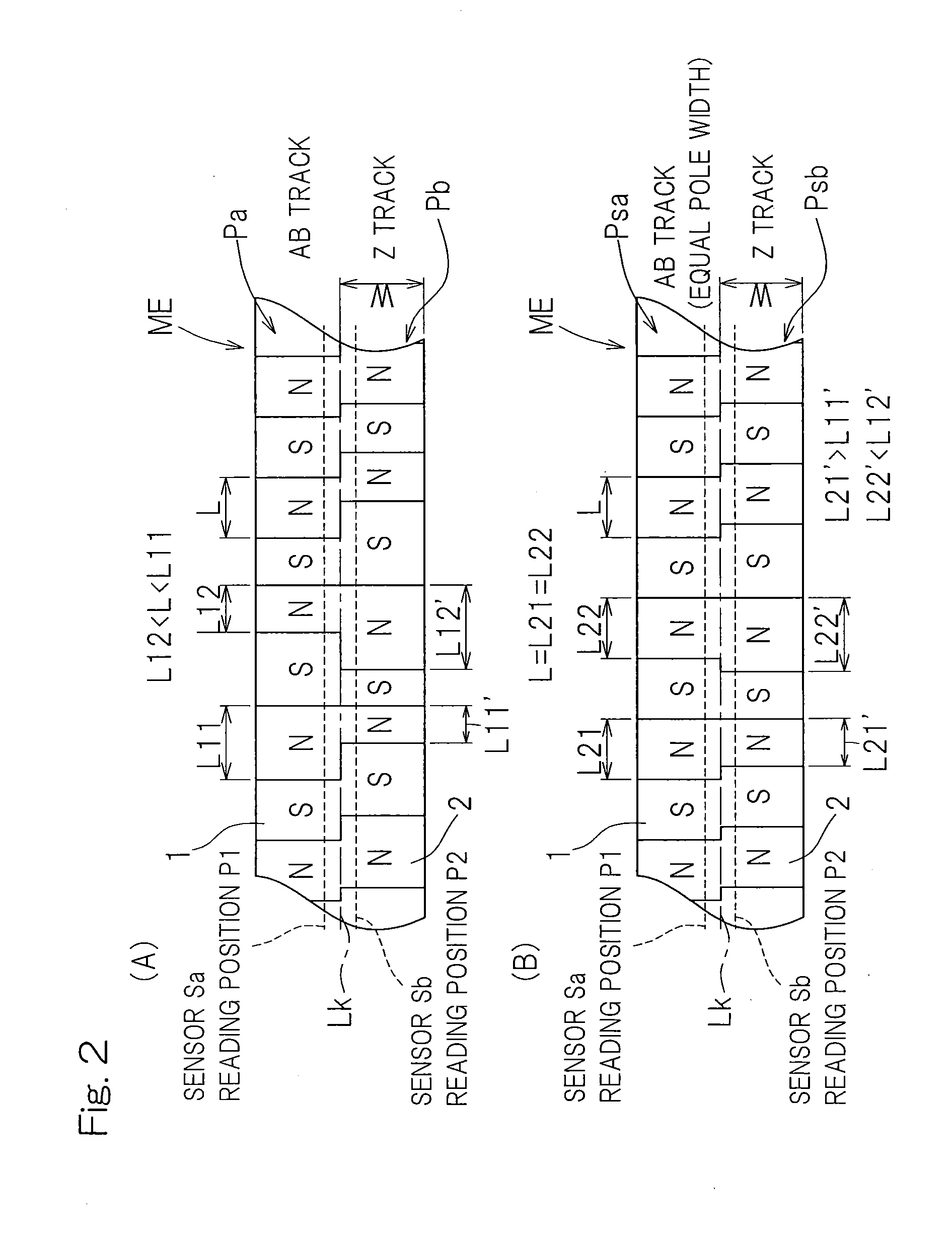Magnetic encoder
a technology of magnetic encoder and encoder, which is applied in the direction of measuring devices, instruments, and using electrical means, etc., can solve the problems of reducing detection sensitivity, increasing production cost, and increasing undesirable effects of magnetic interference, so as to reduce detection sensitivity, increase magnetic interference, and prevent possible failures.
- Summary
- Abstract
- Description
- Claims
- Application Information
AI Technical Summary
Benefits of technology
Problems solved by technology
Method used
Image
Examples
first embodiment
[0089]the present invention will be described in connection with FIGS. 1A and 1B, and FIG. 2 showing diagrams (A) and (B). A magnetic encoder according to this embodiment may be used, for example, to detect rotation, rotational angles, and linear movements of various devices.
[0090]As shown in FIGS. 1A and 1B, a magnetic encoder ME includes plural rows of annular magnetic encoder tracks 1, 2 that are arranged adjacent to each other and are formed integrally with the magnetic encoder ME. The magnetic encoder tracks 1, 2 are disposed on a disc-shaped (FIG. 1B) or cylindrical (FIG. 1A) core 3 such that the magnetic encoder tracks 1, 2 are arranged coaxially and adjacent to each other on a surface of the core 3. As shown in FIG. 1B, a magnetic encoder ME that includes, for example, a magnetized, axial-type, annular magnetic body may be attached to an outer peripheral surface Da of, for example, a rotational raceway member of a bearing, with a cylindrical segment of the core 3 being force...
second embodiment
[0101]The second embodiment through the sixteenth embodiment of the present invention will be hereinafter described. Note that those features corresponding to the features already described with reference to the preceding embodiments will be given the same reference signs and will not be described. In the discussion of a given configuration where only certain features are described, the remaining non-described features should be considered as the same as those already described with reference to the preceding embodiments. Also note that beside the combinations of the features described in detail with reference to a certain embodiment, various embodiments themselves can be partially combined with each other unless such combinations are inoperable.
[0102]FIGS. 3A and 3B show the second embodiment. A magnetic encoder as shown in FIGS. 3A and 3B includes plural rows (two rows in the illustrated example) of magnetic encoder tracks 1, 2 that are arranged adjacent to each other and are form...
third embodiment
[0103]As in the third embodiment shown in FIGS. 4A, 4B and 5, the magnetic encoder ME may include three or more rows of magnetic encoder tracks that are arranged adjacent to each other and are formed integrally with the magnetic encoder, such. For example, the magnetic encoder ME may include a plurality of Z tracks. Use of the resulting signals enables more intricate detection of rotation.
PUM
 Login to View More
Login to View More Abstract
Description
Claims
Application Information
 Login to View More
Login to View More - R&D
- Intellectual Property
- Life Sciences
- Materials
- Tech Scout
- Unparalleled Data Quality
- Higher Quality Content
- 60% Fewer Hallucinations
Browse by: Latest US Patents, China's latest patents, Technical Efficacy Thesaurus, Application Domain, Technology Topic, Popular Technical Reports.
© 2025 PatSnap. All rights reserved.Legal|Privacy policy|Modern Slavery Act Transparency Statement|Sitemap|About US| Contact US: help@patsnap.com



